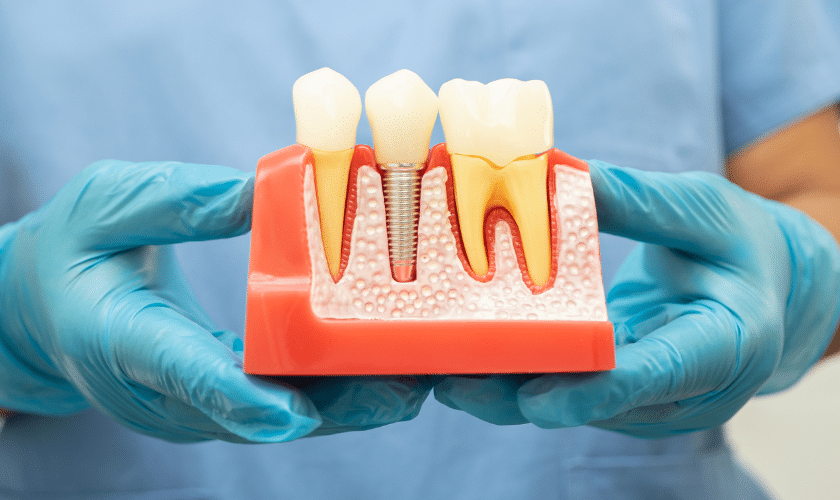
Are you thinking about getting dental implants to replace your missing teeth? Understanding the detailed steps of the implant procedure can ease any concerns and prepare you for the journey to a healthier, more confident smile. Here’s a comprehensive guide that breaks down each phase of the process.
Consultation and Evaluation
Your first step towards getting dental implants involves a thorough consultation and evaluation with your dentist. During this visit, the dentist assesses your oral health, discusses your medical history, and evaluates whether you are a suitable candidate for implants.
Initial Examination
The initial examination often includes X-rays or 3D imaging to get a clear picture of your jawbone structure. This helps the dentist determine the ideal placement for the implants and identify any potential issues, such as insufficient bone density or sinus proximity, that need addressing before proceeding.
Treatment Plan Discussion
After the examination, your dentist will discuss the treatment plan tailored to your specific needs. This plan includes the number of implants required, the type of implants, and the timeline of the entire procedure. It’s crucial to ask questions during this phase to ensure you fully understand the process and have realistic expectations.
Preparatory Procedures
In some cases, preparatory procedures are necessary to create a suitable environment for this surgical treatment. These procedures ensure the success and longevity of the implants.
Bone Grafting
If the jawbone lacks the necessary density or volume to support an implant, a bone graft may be required. This procedure involves adding bone material to the jawbone to create a solid foundation for the implant. The grafted bone can be sourced from another part of your body, a donor, or a synthetic material.
Sinus Lift
A sinus lift, or sinus augmentation, is another preparatory procedure that might be needed if the implant is to be placed in the upper jaw. This involves adding bone below the sinus cavity to ensure there’s enough bone to hold the implant securely.
Placing the Implant
Once your mouth is ready, the actual dental implant procedure can begin. This stage is crucial as it involves placing the implant into your jawbone, where it will serve as the root for your new tooth.
Surgical Placement
During the surgical procedure, your dentist will create an incision in your gum to expose the jawbone. A small hole is then drilled into the bone, where the titanium implant post is inserted. The gum is then stitched back, and the healing process begins.
Healing Period
After the implant is placed, a healing period known as osseointegration is essential. This phase allows the implant to integrate with the bone, providing a stable foundation for the artificial tooth.
Osseointegration
Osseointegration typically takes a few months, during which the implant fuses with the jawbone. It’s crucial to follow your dentist’s care instructions during this period to ensure proper healing. Avoid putting pressure on the implant site and maintain excellent oral hygiene.
Attaching the Abutment
Once osseointegration is complete, the next step is attaching the abutment. The abutment serves as a connector that holds and provides support for the crown.
Minor Surgery
This phase involves a minor surgery to reopen the gum and attach the abutment to the implant. The gum tissue is then allowed to heal around the abutment, which usually takes a couple of weeks.
Fitting the Crown
After the abutment is securely in place and the gum has healed, the final step is fitting the crown. The crown is the visible part of the implant, mimicking the appearance and function of a natural tooth.
Creating the Crown
Your dentist will take impressions of your mouth to create a custom crown that matches the size, shape, and color of your natural teeth. This ensures that the crown blends seamlessly with your smile.
Attaching the Crown
Once the crown is ready, your dentist will attach it to the abutment. This process is usually straightforward and involves checking the fit and making any necessary adjustments to ensure comfort and functionality.
Post-Procedure Care
Proper post-procedure care is essential for the success and longevity of your dental implants. Follow these guidelines to maintain your new smile.
Oral Hygiene
Maintain excellent oral hygiene by brushing twice a day, flossing daily, and using an antibacterial mouthwash. Regular dental check-ups and cleanings are also crucial to monitor the health of your implants and surrounding teeth.
Avoiding Certain Habits
Avoid habits that could damage your implants, such as smoking, chewing hard foods, or using your teeth as tools. These habits can compromise the stability of your implants and lead to complications.
Regular Dental Visits
Regular dental visits are essential to ensure the continued success of your implants. Your dentist will check the implant site, perform professional cleanings, and address any concerns you may have.
Dental implants are a reliable and effective solution for restoring missing teeth. By understanding each step of the implant procedure, you can approach the process with confidence and ease. If you’re considering the surgical treatment, consult with your Toms River dentist to begin your journey toward a healthier, more radiant smile.
With this comprehensive guide, you’re well-equipped to understand the process and make informed decisions about your oral health. Embrace the path to a renewed smile and enjoy the lasting benefits of dental implants.









